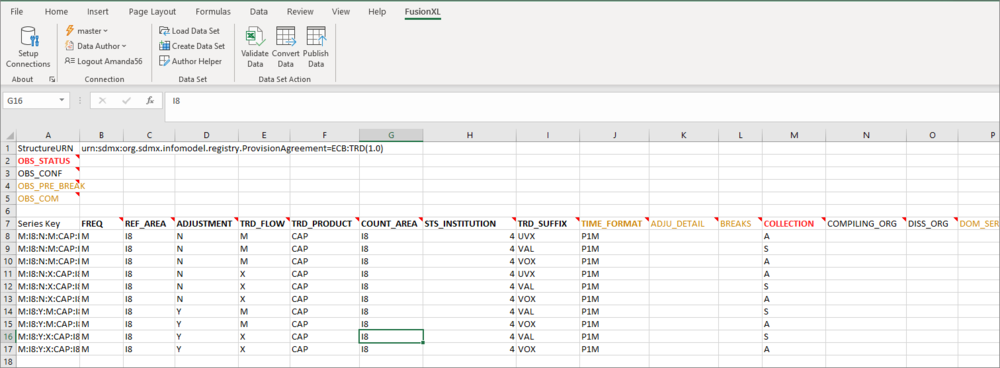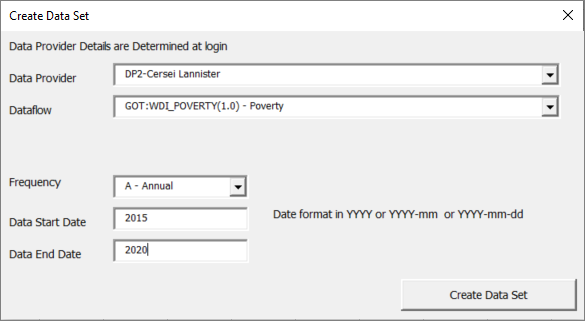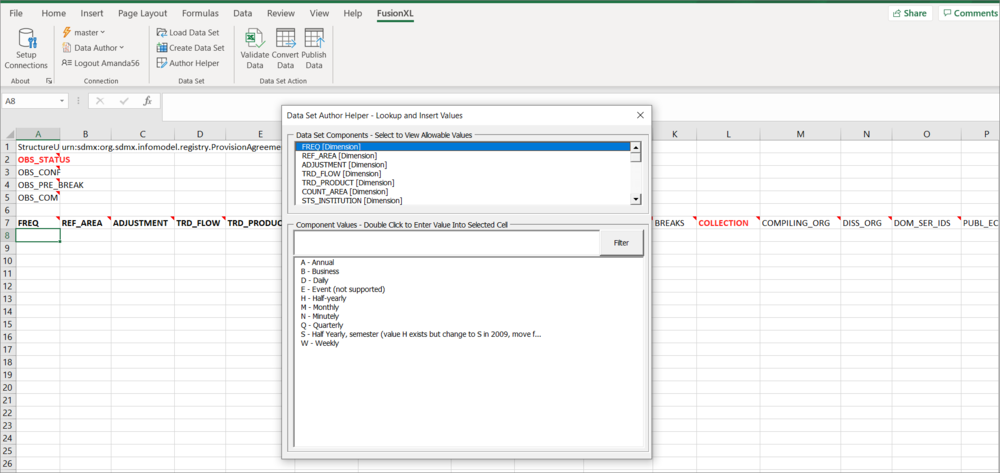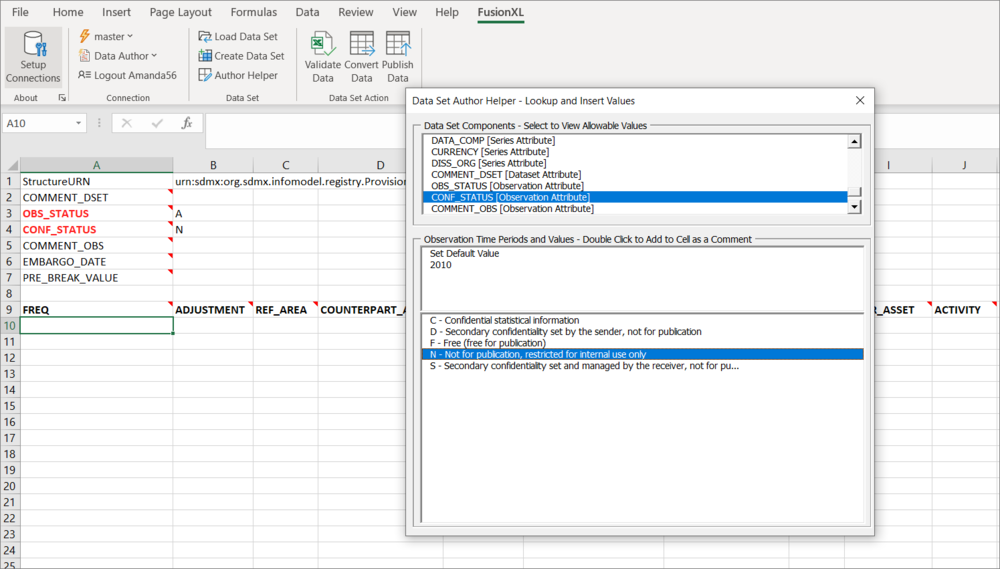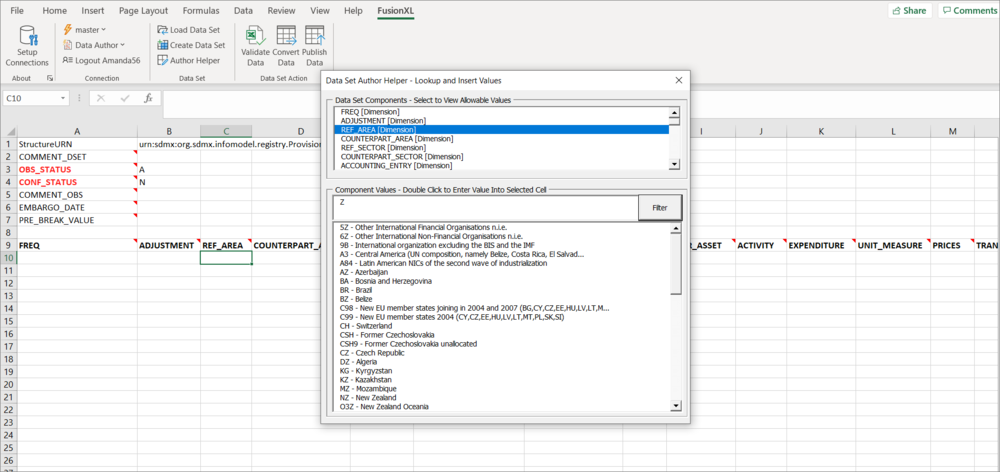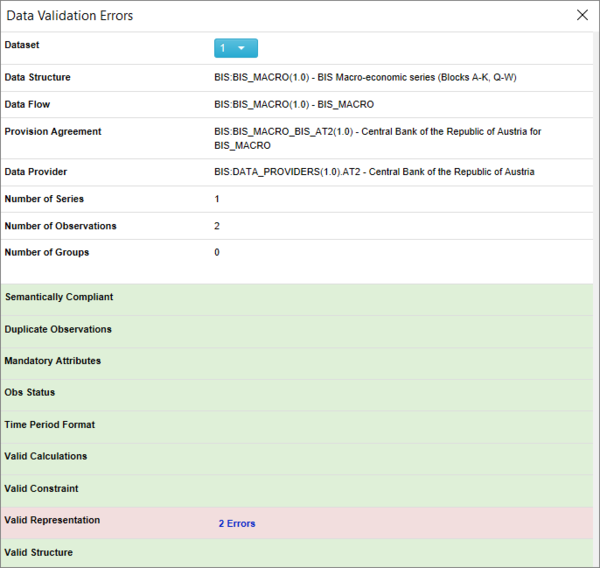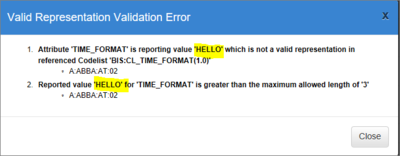FusionXL DataAuthor
Contents
Prerequisites
To use the Data Author, you need to have installed the FXL add-in and connected to a Registry from the FusionXL tab in an Excel workbook. Click here to learn how to do that. Additionally, you will also need to Login with your Registry username and password.
The image below shows the Connected Registry along with the name of the logged in user.
Features Overview
These functions are grouped into two areas:
Data Set
Data sets can be created using FXL and also existing datasets (in one of the supported formats) can be loaded. The Load and Create options allow the user to use the Author Helper tool which enable a user to look up the format of the data expected including individual codes if a component has been enumerated.
Load a Data Set
To load an existing dataset, locate the file using Windows Explorer.
If the system can find details of the Provision Agreement, a pop up window will appear enabling you to select the Data Provider and the Dataflow.
Supported Formats
Supported formats are:
- SDMX-ML
- SDMX-CSV
- SDMX-JSON
- FUSION-JSON
An example of a dateset (a subset of ECB:TRD taken from our demo site) is shown below.
Note that Mandatory fields are displayed in Red text.
Once the dataset is loaded, it can be edited, saved and loaded into a Fusion Registry.
The Author Helper can be used as discussed below.
Create Data Set
This option allows a logged in user (with the appropriate permissions) to create a dataset for a Provision Agreement held in the connected Registry.
Once this option is selected new window will open enabling you to chose from the Provision Agreements held on the connected Registry as shown in the example below.
This window is also used to provide further information such as the Frequency, Start date and End date.
This is used to build a dataset which is performed once Create Data Set is selected.
A simple example is shown below.
The above example contains a header row (row 1) an Attribute in row 2 and row 4 shows the Dimensions included in the Data Structure together with the Time Periods selected in the previous step.
Attributes - in this example there is only one and it is not mandatory. It is possible to set a default for all data rows. However if a different attribute is required for each row it is possible but requires an element of manipulation not covered in this article.
Mandatory Attributes - if the data structure includes Mandatory Attributes, they will appear in the normal reporting row along with the dimensions.
Observation Attributes
This is explained in the Author Helper section below.
Mandatory Cells - in this example, none are mandatory which is demonstrated by the lack of Red names in row 4.
Data can be entered manually or the Author Helper can be invoked as discussed below.
Author Helper
The Author Helper is an extremely useful tool which allows you to see the Components and allowable Codes expected based on the Dataflow and Data Provider combination. If codelists have been restricted based on the Dataflow or Data Provider, then the Author Helper will not include disallowed codes.
When selecting a Component in the Author Helper, the selected cell in the Excel worksheet will be automatically selected in the current row. Double clicking on a value in the Component Values section will automatically populate the current cell with the Code Id.
An example is shown below.
Observation Attributes
For observation attributes, the dataset author helper will also include the options to choose an observation time, or set the default value. If setting a value on the observation, then it will be inserted as a Cell comment, this is shown in the image below.
Using the Filter
If the codelist used in a dimension etc has many possible codes, you can use the filter to help you find a code as shown in the example below.
First, select the Component (in this case REF_AREA) that you want to search on, next enter refine your search. In this example Z has been entered to search for all codes which contain 'z' in either the ID or description. Matches are displayed when the Filter button is clicked.
Long Code Lists
Please note that if the codelsit had more than 300 codes, only the first 300 will be shown. However you can use the filter to find codes that are beyond the 300 mark.
Data Set Action
Validate Data
Once a dataset has been loaded, or authored, in FusionXL, it can be validated.
To validate a dataset, click on the Validate button. FusionXL will then check the Validation rules set up in the connected Registry and, if valid, you will be advised that the validation process has been successful.
If the dataset is valid, a small window will open to indicate there were no errors. If the dataset fails validation, a validation report will be opened, as shown in the image below.
Invalid Datasets
If the dataset fails the Validation process, a validation report will be opened, as shown in the image below.
To view the error, simply click on the Validation error and you will see what has failed.
In order to successfully publish a dataset, fix the validation issues.
Convert Data
This option allows you to convert the data into one of the supported formats which will be listed in Export Format box. An option Sender ID can be added if required and will be included in the file Header.
Publish Data
For data providers who have been configured to publish data to the linked Fusion Registry, the Publish Data button facility can be used. This will publish the data in the current worksheet to the linked Registry, for processing, validation, and import.
Before the data is published, you should use the Validate option to ensure that the data in the FXL sheet is acceptable.








